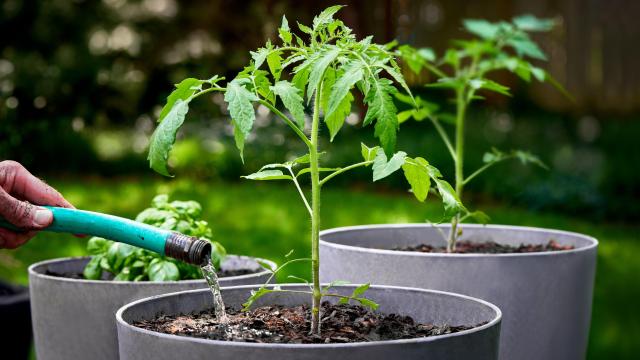Garden soil may seem like the right choice for an outdoor container garden, but as it turns out, there are better options. Here’s what to know.
Why is garden soil a bad choice for outdoor plants in containers?
According to the University of New Hampshire Extension Office, the stuff labeled “garden soil” in garden centres and hardware stores is typically intended for use in the ground—not in containers or other pots or planters. In addition to minerals and organic matter, garden soils that haven’t been pasteurized may also contain weed seeds, insects, and diseases.
When this combination is used in containers, the soil can quickly end up waterlogged and compacted, leaving limited space for air around the roots, and potentially resulting in stunted growth or root rot.
What kind of soil to use in outdoor plants in containers
Instead of garden soil, use a potting soil mix for outdoor planters, according to the UNH Extension Office. Also known as “soilless mixes,” they are lightweight, and designed to leave ample air space around the roots.
There are a variety of potting soil mix combinations, but the UNH Extension Office recommends using one that contains:
- An organic component (e.g. peat moss, compost, bark)
- Vermiculite or perlite (to help retain moisture)
- Sand
- Nutrients
- Limestone
You may also come across potting soil mixes that contain slow-release fertiliser, or moisture-retaining treatments like “hydrogels” or “water-storing crystals.” Those typically aren’t necessary for your container plant to thrive, but can be helpful, depending on your plant’s needs.
In addition to finding one that’s lightweight, be sure to pick a potting soil mix that’s also fluffy and dry. And while some compost is fine, avoid mixes that are compost-heavy. When in doubt, opt for a general-purpose potting soil mix, or make your own.

Leave a Reply
You must be logged in to post a comment.